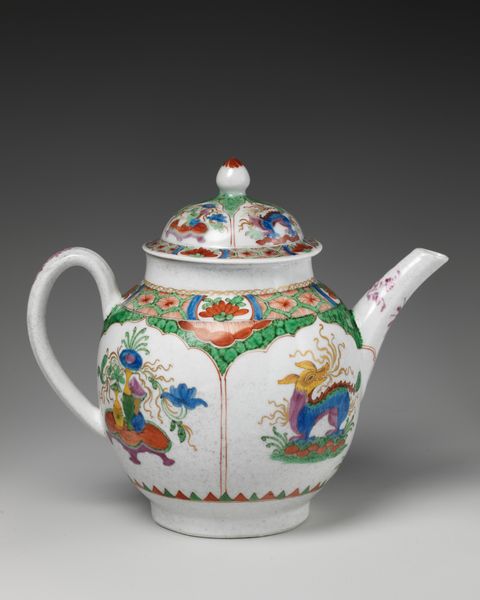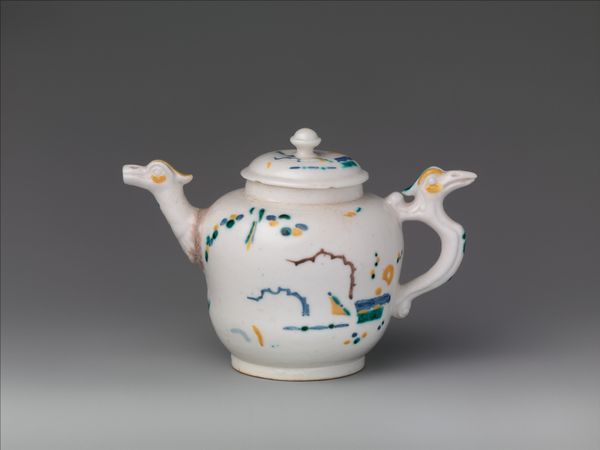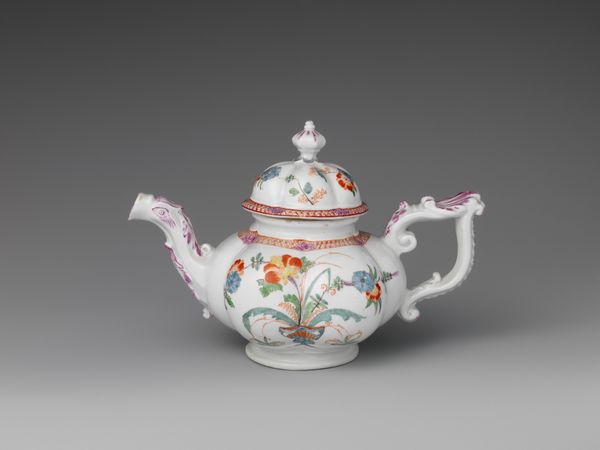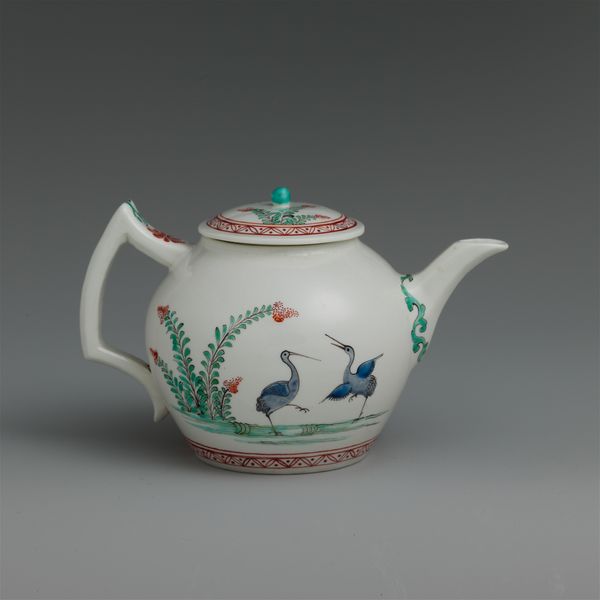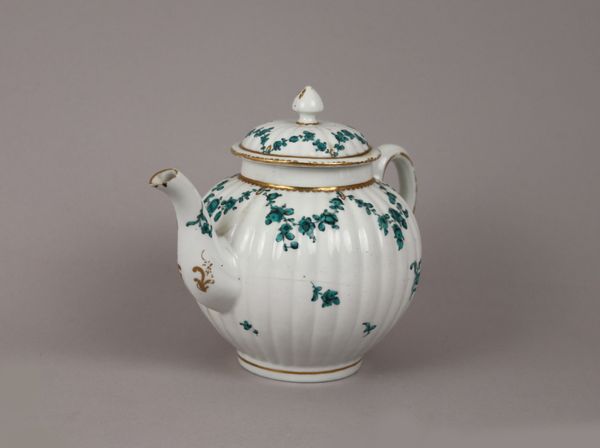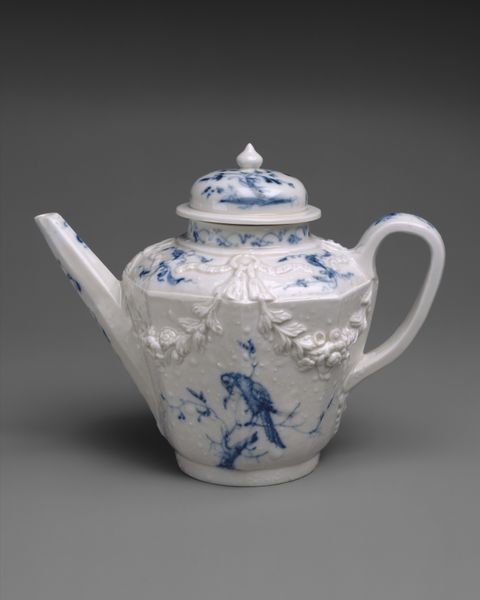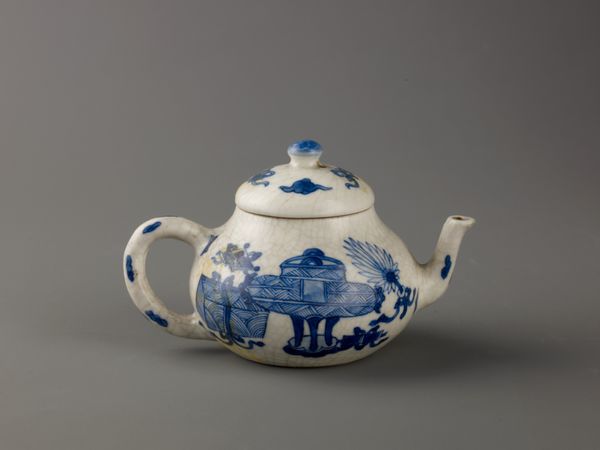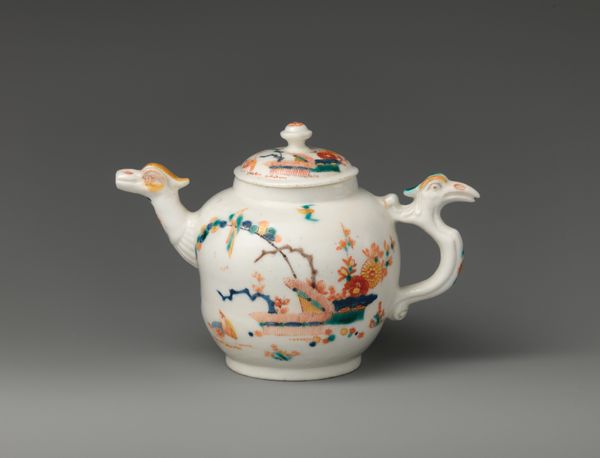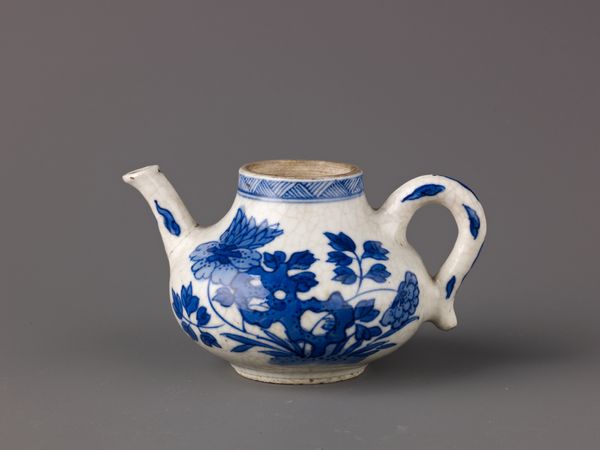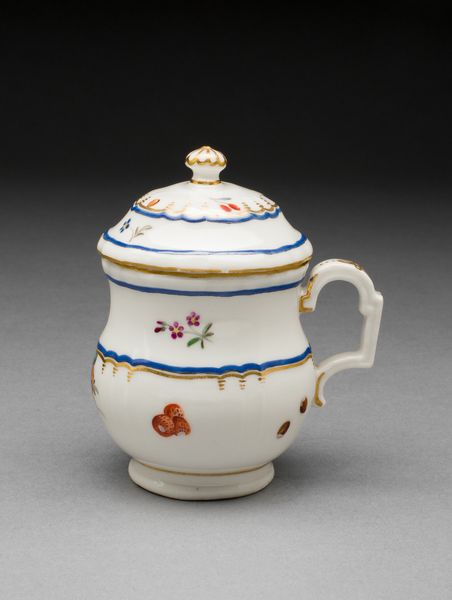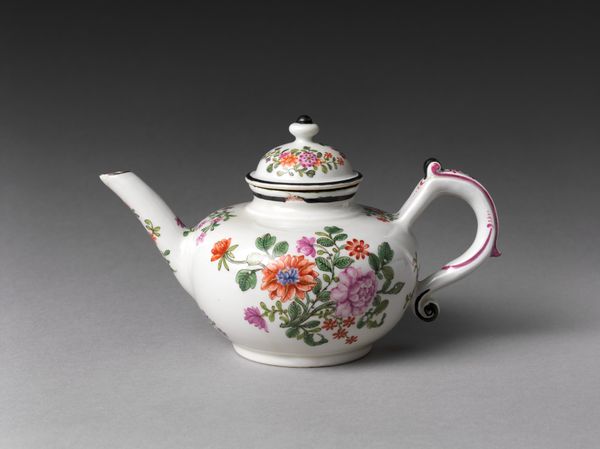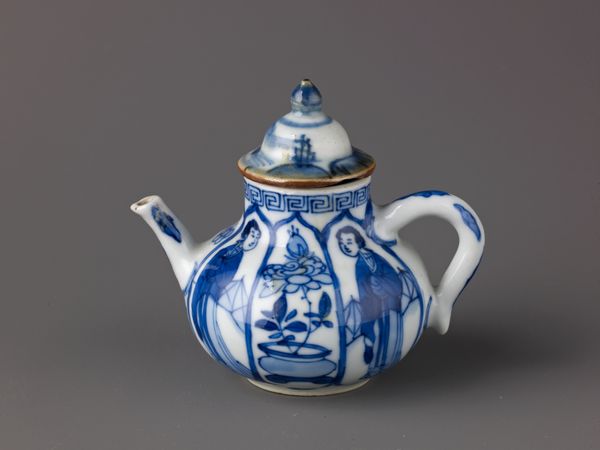
tempera, painting, ceramic
#
tempera
#
painting
#
asian-art
#
landscape
#
ceramic
#
miniature
Dimensions: Height with lid: 2 1/2 in. (6.3 cm.)
Copyright: Public Domain
Editor: This is a delightful object! It’s a miniature, covered wine pot or teapot, made in China, sometime between 1662 and 1722. I am struck by the colorful landscape scenes painted on the white ceramic surface. What do you make of its decoration and form? Curator: Its form echoes classical Chinese ceramics. Observe the precise curve of the spout, the balanced loop of the handle, and the subtle dome of the lid. Note how the tempera decoration enhances these shapes, the brushstrokes moving with a fluid rhythm across the curved surfaces. The figures are distributed not for narrative clarity but rather compositional balance. The placement of colors like the vivid blues also activates space. Editor: So you're focusing on how the decoration emphasizes the pot's inherent shape? Curator: Precisely. Consider also how the restricted palette of greens, reds, and blues contributes to the piece’s overall harmony. Each color interacts, defining form. The landscapes appear dreamlike, rendered with efficient brushwork. What function does the miniature format serve, do you think? Editor: Perhaps it focuses the viewer’s attention even more intently on the precise execution and pictorial compression? Curator: A valuable insight. Form and decoration are perfectly interdependent. They work in unison to realize the artwork's aesthetic intentions. Editor: I never thought about it that way, I was too lost in the little landscape it depicts, thank you. Curator: Analyzing how form, color, and brushstrokes interact helps us move beyond mere depiction and apprehend a richer understanding of visual language.
Comments
No comments
Be the first to comment and join the conversation on the ultimate creative platform.

